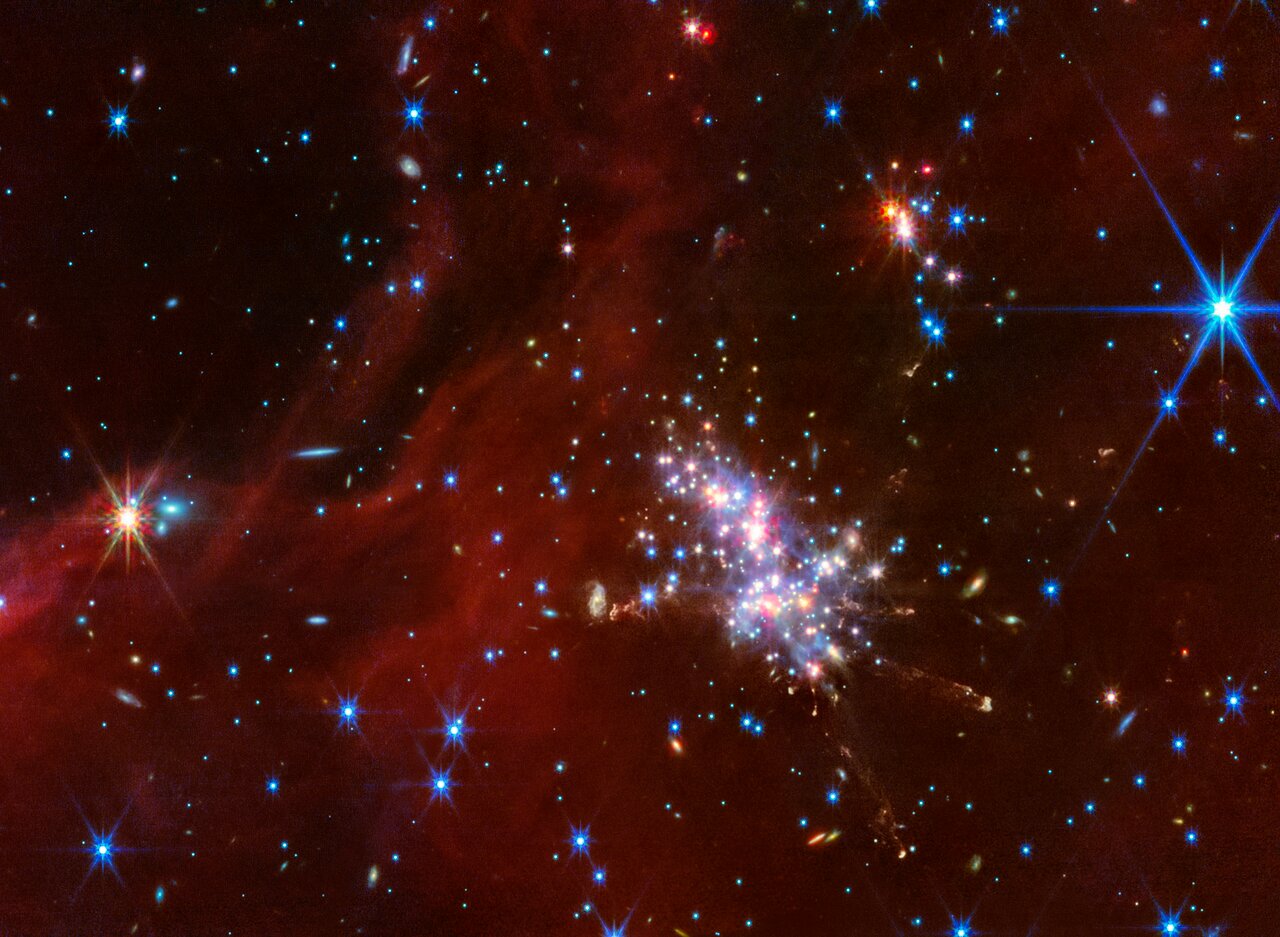About the Object
| Name: | [YKT2006b] Cloud2-S | |
|---|---|---|
| Distance: |
40000 light years | |
| Constellation: | Cassiopeia | |
| Category: | Galaxies NIRCam | |
Coordinates
| Position (RA): | 2 48 29.84 |
|---|---|
| Position (Dec): | 58° 23' 38.02" |
| Field of view: | 1.77 x 1.30 arcminutes |
| Orientation: | North is 2.9° left of vertical |
Colours & filters
| Band | Wavelength | Telescope |
|---|---|---|
| Infrared | 1.15 μm | James Webb Space Telescope NIRCam |
| Infrared | 1.5 μm | James Webb Space Telescope NIRCam |
| Infrared | 2.0 μm | James Webb Space Telescope NIRCam |
| Infrared | 3.56 μm | James Webb Space Telescope NIRCam |
| Infrared | 4.44 μm | James Webb Space Telescope NIRCam |
|
Infrared
PAH | 7.7 μm | James Webb Space Telescope MIRI |
| Infrared | 12 μm | James Webb Space Telescope MIRI |
Digel Cloud 2S
The NASA/ESA/CSA James Webb Space Telescope has observed the very outskirts of our Milky Way galaxy. Known as the Extreme Outer Galaxy, this region is located more than 58 000 light-years from the Galactic centre.
To learn more about how a local environment affects the star formation process within it, a team of scientists directed the telescope’s NIRCam (Near-InfraRed Camera) and MIRI (Mid-InfraRed Instrument) towards a total of four star-forming areas within Digel Clouds 1 and 2: 1A, 1B, 2N, and 2S.
In the case of Cloud 2S, shown here, Webb revealed a luminous main cluster that contains newly formed stars. Several of these young stars are emitting extended jets of material from their poles. To the main cluster’s top right is a sub-cluster of stars, a feature that scientists previously suspected to exist but has now been confirmed with Webb. Additionally, the telescope revealed a deep sea of background galaxies and red nebulous structures that are being carved away by winds and radiation from nearby stars.
[Image description: At centre is a compact star cluster composed of luminous red, blue, and white points of light. Faint jets with clumpy, diffuse material extend in various directions from the bright cluster. Above and to the right is a smaller cluster of stars. Translucent red wisps of material stretch across the scene, though there are patches and a noticeable gap in the top left corner that reveal the black background of space. Background galaxies are scattered across this swath of space, appearing as small blue-white and orange-white dots or fuzzy, thin discs. There is one noticeably larger blue-white point with diffraction spikes, a foreground star in the upper right.]
Credit:NASA, ESA, CSA, STScI, M. Ressler (NASA-JPL)
About the Image
| Id: | weic2422a | |
|---|---|---|
| Type: | Observation | |
| Release date: | 12 September 2024, 16:00 | |
| Related releases: | weic2422 | |
| Size: | 3378 x 2474 px | |




